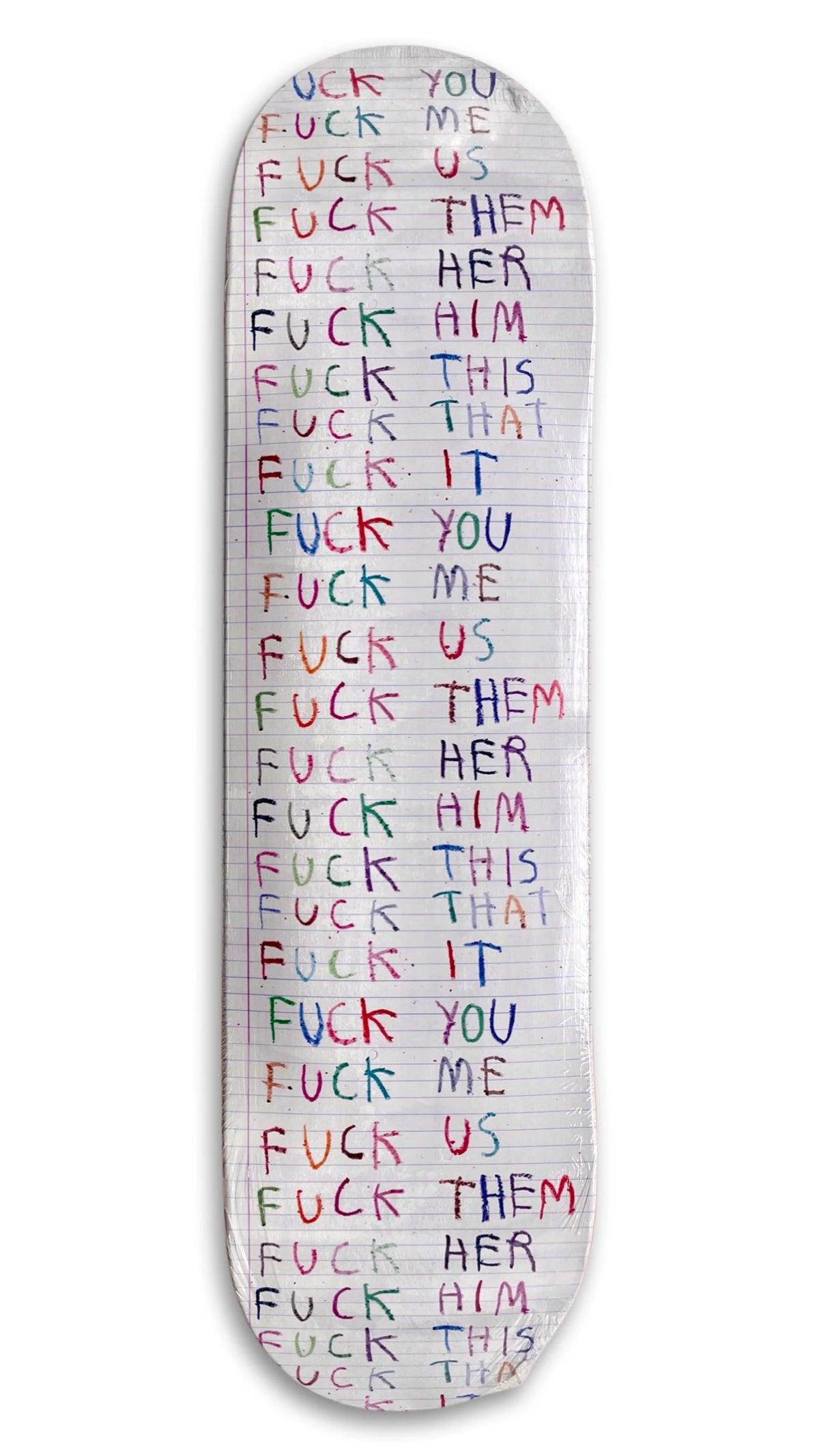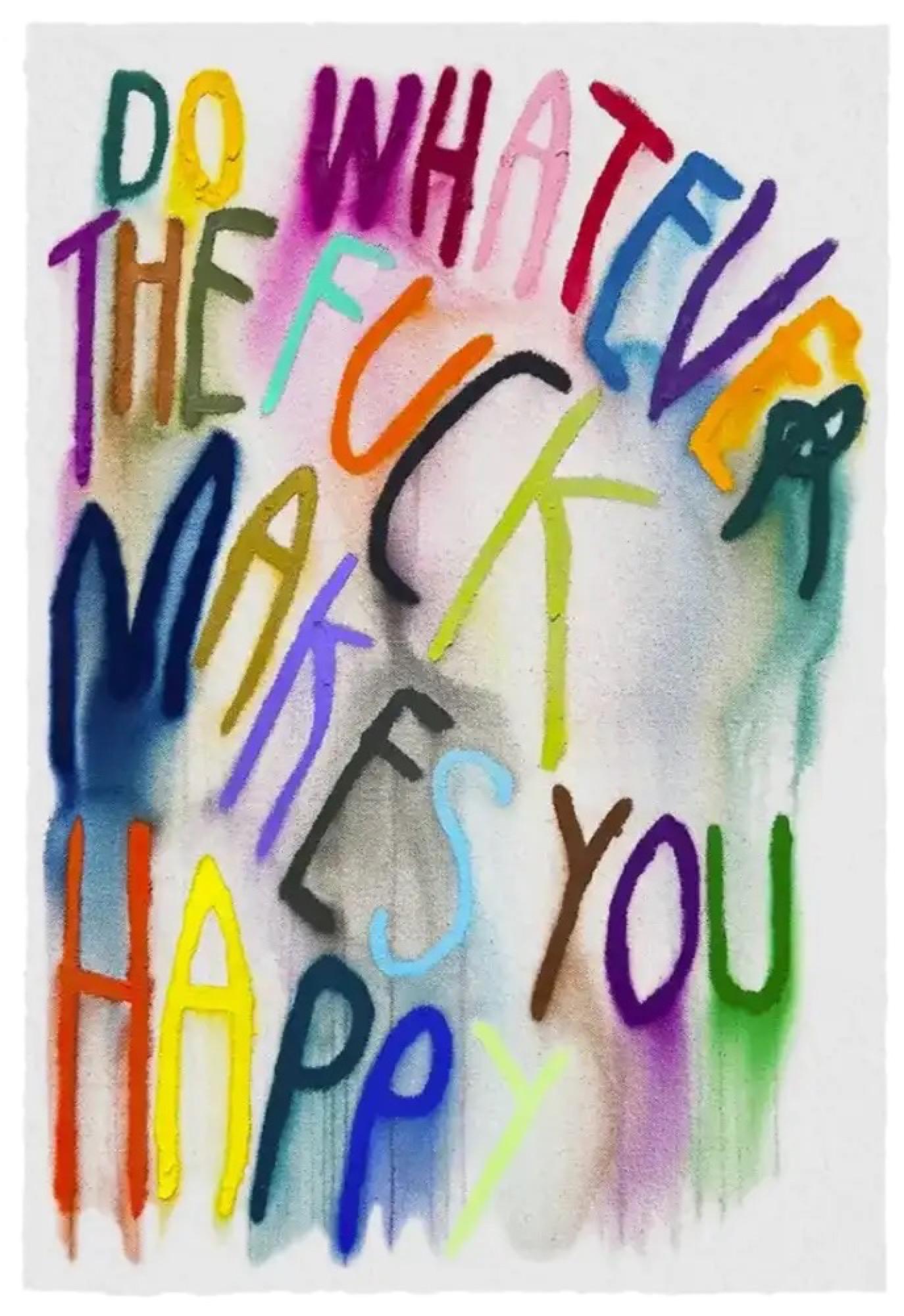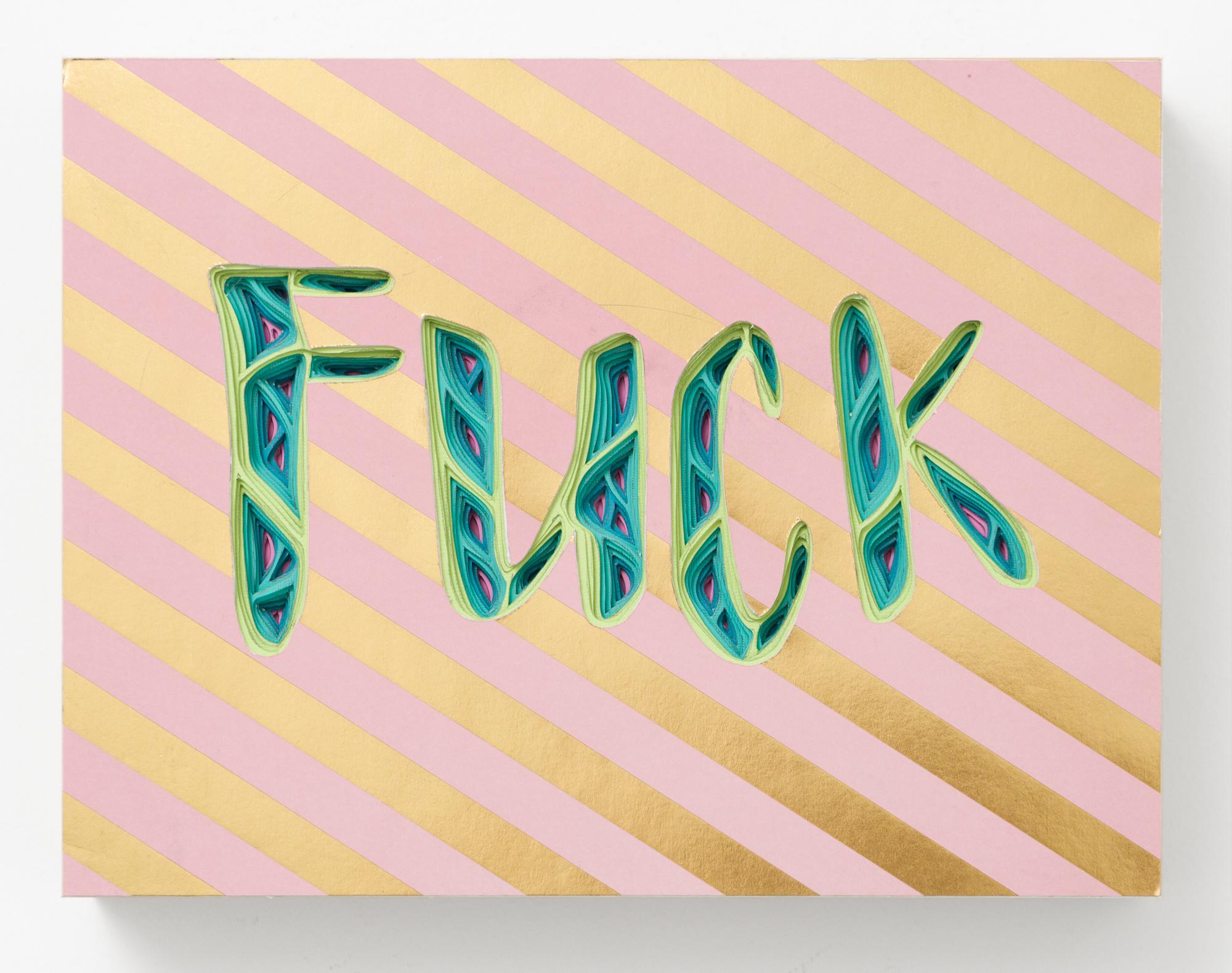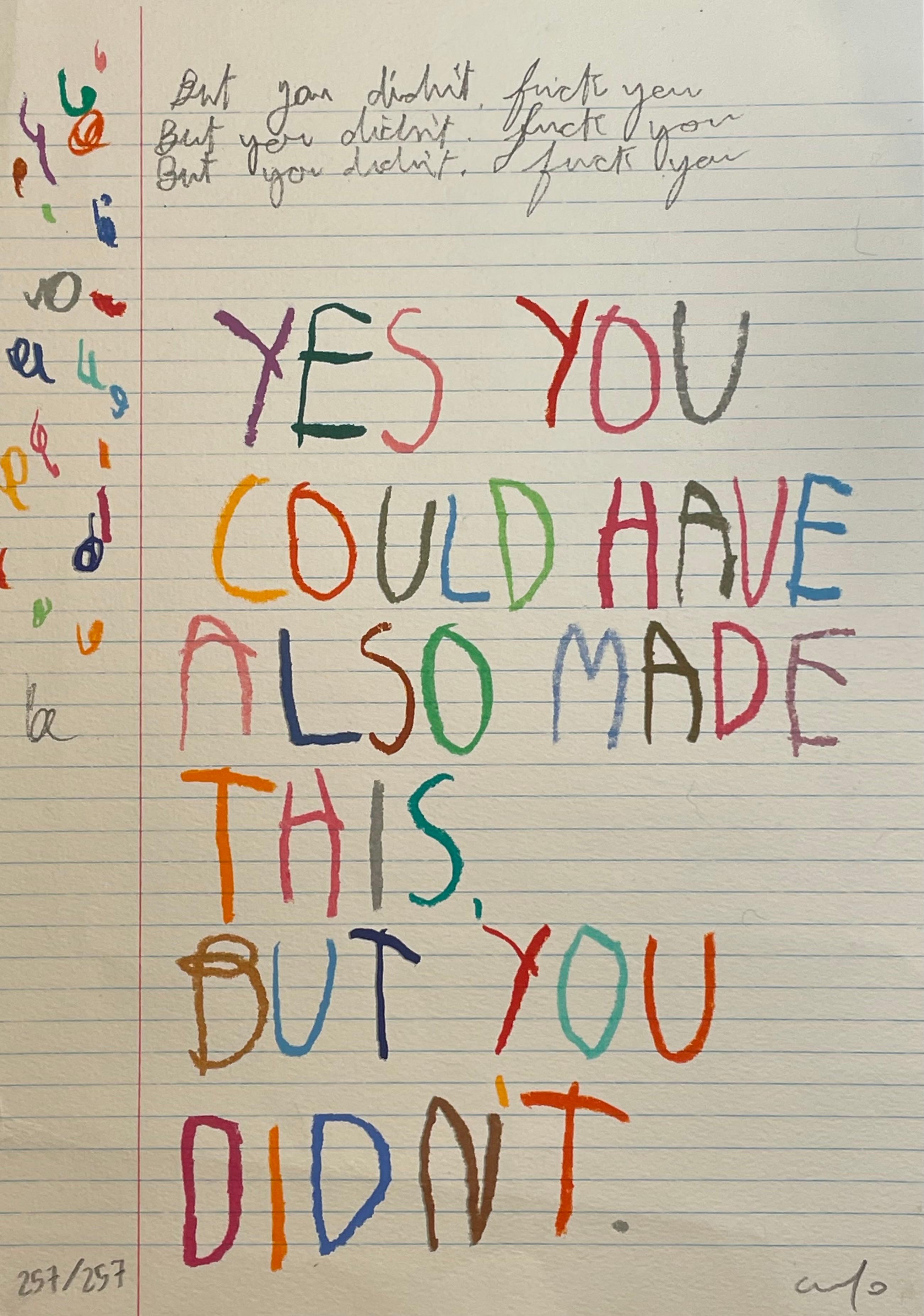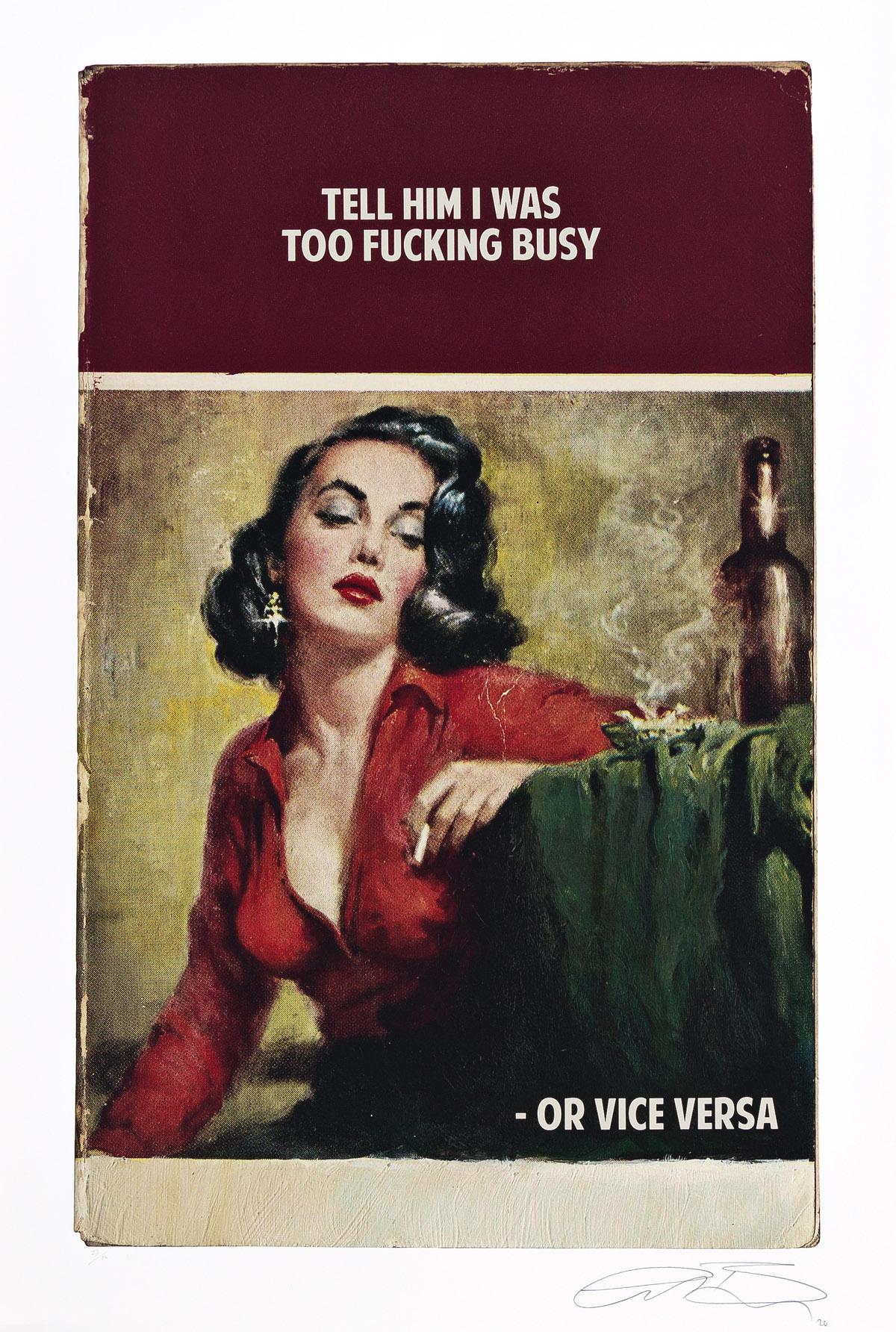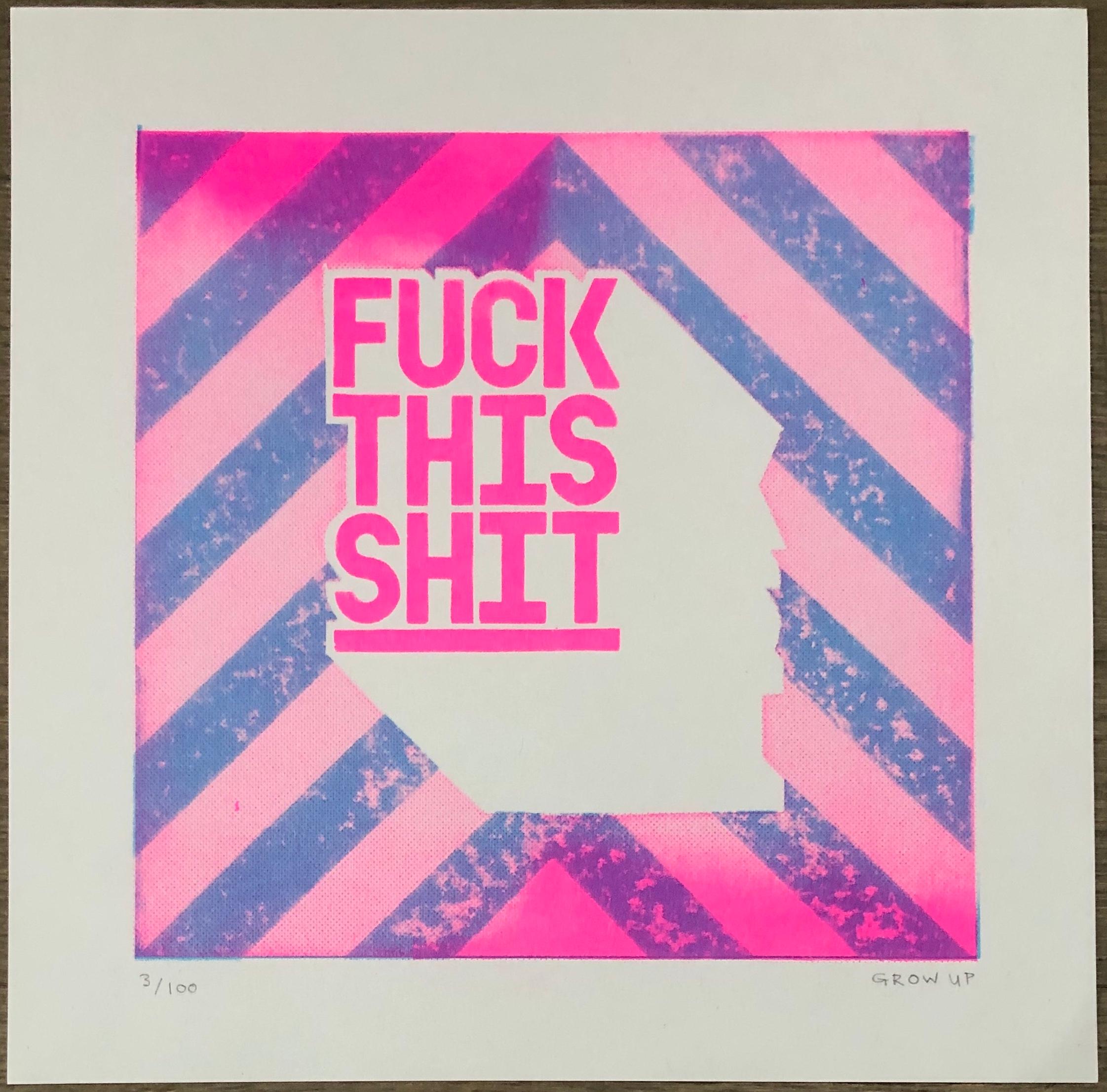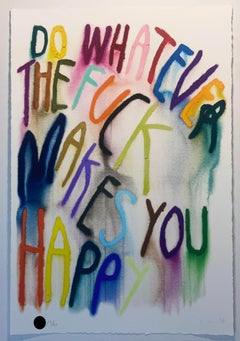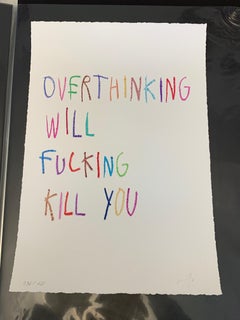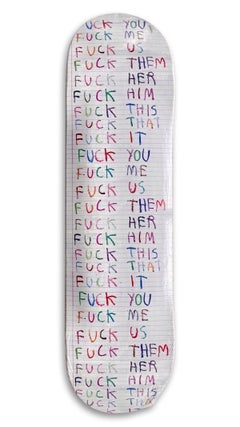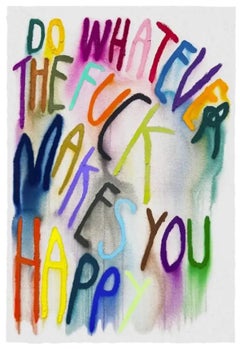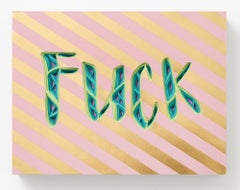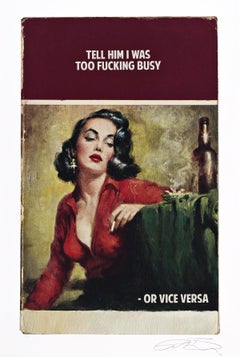Items Similar to CB Hoyo Skateboarding "Apparatus" Fuck Us, Fuck Them, Fuck Her, Fuck Him, Fuck!
Want more images or videos?
Request additional images or videos from the seller
1 of 7
CB Hoyo Skateboarding "Apparatus" Fuck Us, Fuck Them, Fuck Her, Fuck Him, Fuck!2021
2021
$1,250
£954.37
€1,102.77
CA$1,754.76
A$1,955.87
CHF 1,026.18
MX$23,884.32
NOK 12,993.62
SEK 12,280.95
DKK 8,230.42
About the Item
Skateboarding Apparatus, 2021
Skate Deck
32 x 8 x .25 in (81.3 x 20.3 x .64 cm)
Edition of 150, w/ Signed COA
Multidisciplinary artist CB Hoyo is known for skewering norms, his words in paintings taunting the art world and society at large with wry messages like “Buy art, not drugs… well, buy both” or “Now that I own a fake Hockney, I can pretend I’m a contemporary art collector.” Cuban born, and European-based, Hoyo’s work first garnered fame through social media and the autodidact speaks fluently in the international language of “fuck you.”
- Creation Year:2021
- Dimensions:Height: 32 in (81.28 cm)Width: 8.25 in (20.96 cm)Depth: 2 in (5.08 cm)
- Medium:
- After:CB Hoyo (1955, Cuban)
- Period:
- Condition:
- Gallery Location:Draper, UT
- Reference Number:1stDibs: LU132729411592
About the Seller
5.0
Vetted Professional Seller
Every seller passes strict standards for authenticity and reliability
Established in 2002
1stDibs seller since 2019
225 sales on 1stDibs
Typical response time: 1 hour
- ShippingRetrieving quote...Shipping from: Atlanta, GA
- Return Policy
Authenticity Guarantee
In the unlikely event there’s an issue with an item’s authenticity, contact us within 1 year for a full refund. DetailsMoney-Back Guarantee
If your item is not as described, is damaged in transit, or does not arrive, contact us within 7 days for a full refund. Details24-Hour Cancellation
You have a 24-hour grace period in which to reconsider your purchase, with no questions asked.Vetted Professional Sellers
Our world-class sellers must adhere to strict standards for service and quality, maintaining the integrity of our listings.Price-Match Guarantee
If you find that a seller listed the same item for a lower price elsewhere, we’ll match it.Trusted Global Delivery
Our best-in-class carrier network provides specialized shipping options worldwide, including custom delivery.More From This Seller
View AllCB HOYO YES YOU COULD HAVE MADE THIS BUT YOU DIDN'T... Street Art
By CB Hoyo
Located in Draper, UT
Medium:
Print
Condition
Print in good condition and has been stored flat since purchase.
Signature
Hand-signed by artist, Hand Signed and Numbered by the Artist in Pencil, CB HOYO. ...
Category
2010s Contemporary Abstract Prints
Materials
Carbon Pencil, Screen
"Do Whatever The Fuck Makes You Happy" CB HOYO Contemporary Street Art Print
By CB Hoyo
Located in Draper, UT
Fine art giclée print on Hahnemühle Photo Rag with Hand Deckle Edge's
19 × 13 in 48.3 × 33 cm
Edition of 560
Part of a limited edition set
Includes a Certificate of Authenticity From New Union Gallery...
Category
2010s Contemporary Figurative Prints
Materials
Giclée
Over Thinking Will Fucking Kill You Screen Print CB HOYO Urban Art Street
By CB Hoyo
Located in Draper, UT
CB Hoyo’s irreverent multidisciplinary practice—which spans painting, sculpture, and installation—approaches art-world fraud, forgery, and hype with a sense of humor. The self-taught...
Category
2010s Pop Art More Prints
Materials
Screen
$2,000 Sale Price
20% Off
CB HOYO Limited Edition Hand Signed Book "I don't know what to name this?" Urban
By CB Hoyo
Located in Draper, UT
Only 257 of the these books were hand signed by the artist CB HOYO. Each book binding is unique. "I Didn't Know How To Name This" is the new book dedicated to CB Hoyo's life and creative process. Published by SKIRA, the book is an official collection of all his works accompanied by a lengthy interview in which the artist speaks about himself and deepens his friendship with Plan X Art Gallery. The book is a significant chapter in CB Hoyo's artistic career and personal life. It reinforces the solid foundations of a path that the artist continues to build day after day and to which Plan X Art Gallery is happy to contribute.
Only 257 of the these books were hand signed by the artist CB HOYO. Each book binding is unique. "I Didn't Know How To Name This" is the new book dedicated to CB Hoyo's life and creative process. Published by SKIRA, the book is an official collection of all his works accompanied by a lengthy interview in which the artist speaks about himself and deepens his friendship with Plan X Art Gallery. The book is a significant chapter in CB Hoyo's artistic career and personal life. It reinforces the solid foundations of a path that the artist continues to build day after day and to which Plan X Art Gallery is happy to contribute.
Medium:
Books and Portfolios:
Condition:
Book is in great condition and hand signed by the artist, CB HOYO in black ball point pen.
Signature:
Hand-signed by artist, Hand Signed by the artist CB HOYO on the binding of the pages. Please and thank you...
Category
2010s Pop Art More Art
Materials
Archival Paper
C.B. Hoyo "Overthinking Will Fucking Kill You" Screenprint Street Contemporary
By CB Hoyo
Located in Draper, UT
CB Hoyo titled Overthinking Will Fucking Kill You.
Condition:
Brand New
Signature:
Signed and Numbered by Artist in Pencil, C.B. HOYO. Dated 2020.
Frame:
Not included
Edition of onl...
Category
2010s Street Art Abstract Prints
Materials
Screen
$1,480 Sale Price
20% Off
C.B. Hoyo "Overthinking Will Fucking Kill You" Screenprint Street Contemporary
By CB Hoyo
Located in Draper, UT
CB Hoyo titled Overthinking Will Fucking Kill You.
Condition:
Brand New
Signature:
Signed and Numbered by Artist in Pencil, C.B. HOYO. Dated 2020.
Frame:
Not included
Edition of onl...
Category
2010s Street Art Abstract Prints
Materials
Screen
You May Also Like
Skateboarding Apparatus
By CB Hoyo
Located in Manchester, GB
CB Hoyo, Skateboarding Apparatus, 2021
Screenprint on fine Canadian maple wood skatedeck
80 x 20 cm (32 x 8 in)
Edition of 150
Comes with hand-signed, stamped, and numbered cer...
Category
2010s Contemporary Mixed Media
Materials
Wood, Maple, Screen
Do Whatever The Fuck Makes You Happy
By CB Hoyo
Located in Manchester, GB
CB Hoyo, Do Whatever The Fuck Makes You Happy, 2023
Archival pigment print on Hahnemuhle Photo Rag fine art paper with hand-deckled edges
29.7 x 42 cm (13 x 19 in)
Edition of 560...
Category
2010s Contemporary Prints and Multiples
Materials
Archival Pigment
"FUCK" from "Text-I-Monials" by Charles Clary
By Charles Clary
Located in Philadelphia, PA
"FUCK" is an original wall-hanging sculpture by Charles Clary as part of the artist's popular "Text-i-monial" series. To create the artwork, Clary hand cuts a series of individual sh...
Category
21st Century and Contemporary Contemporary Mixed Media
Materials
Paper, Wood Panel
Tell Him I Was Too Fucking Busy--Or Vice Versa
By The Connor Brothers
Located in New York, NY
A very good impression of this color giclée print with screenprinted varnish on white wove paper. Signed, dated and numbered 23/50 in pencil.
Category
2010s Contemporary Figurative Prints
Materials
Varnish, Color, Giclée, Screen
Fuck This shit - Pink
Located in London, GB
Grow Up
Fuck this Shit - Riso Edition, 2020
2 Colour Risograph on Echo Recycled white 200gsm Paper
Signed and numbered by the artist
25.4cm x 25.4cm
Edition of 100
Grow Up is a Brit...
Category
2010s Street Art Abstract Prints
Materials
Digital, Screen
Cluster Fuck
By Mike Maxwell
Located in Santa Monica, CA
Acrylic
Category
2010s Outsider Art Figurative Paintings
Materials
Acrylic
More Ways To Browse
Cb Wood
1950s Bicycles
70s Vintage Psychedelic Art
Citrus Print
London Taxi
Margo Vintage
Martinet Engraving
Modigliani Head
Picasso Harlequin
Retro 70s Psychedelic Art
Romare Bearden Lithograph
Sumo Wrestler
Sumo Wrestling
Van Gogh Vintage Poster
Vintage Cigarette Advertising
Vintage Original Beer Posters
Vintage Wizard Art
Wassily Kandinsky 1911
